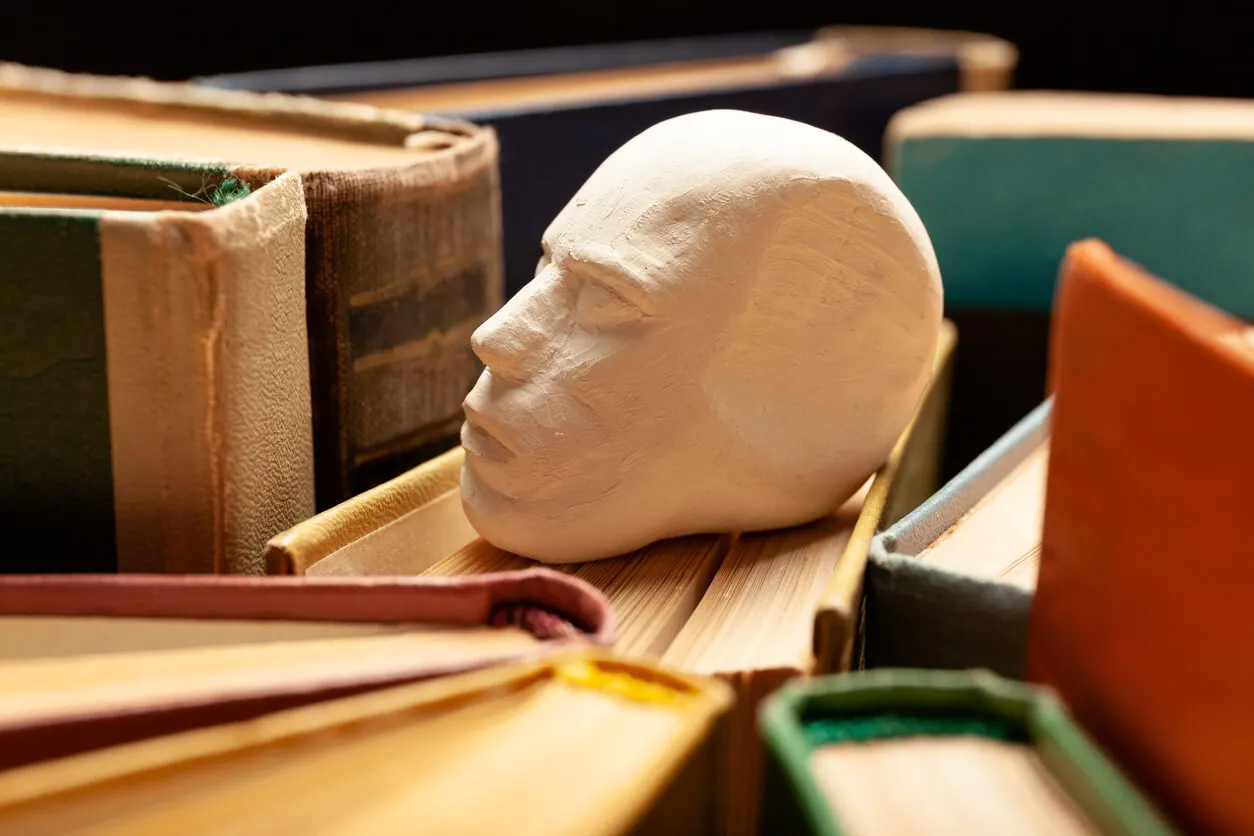Tsundoku: The Trend of Decorating with Books

It’s clear that books are objects to be read, whether for the purpose of enjoying the pleasure of literature, studying academic texts, or learning some kind of skill. However, there’s also a possibility of decorating with books. This is known as tsundoku and is a trend that more and more people are using when decorating their spaces.
This is a term of Japanese origin, which consists of acquiring books for decorative purposes. The copies may have already been read or are planned to be read in the future. The important thing is to decorate different areas of the home by organizing them.
What is “tsundoku”?
Tsundoku is an expression of Japanese origin whose etymology comes from the combination of two words. On the one hand, tsunde oku, which refers to stacking things; on the other hand, dokusho, which means “to read books.” The combination of the two refers to a habit similar to bibliomania, i.e., compulsive book collecting.
However, bibliomania is more associated with an obsessive disorder stemming from hoarding or compulsive hoarder syndrome. Meanwhile, tsundoku can be defined as a decorative trend that uses books to decorate interiors.
In general, many of these decorative trends are associated with minimalism or the procurement of luxury objects. However, tsundoku is an art that’s becoming more and more popular, in which both books that have already been read and books that are about to be read can be used. In addition, it’s possible to include new, used, or worn copies, which makes this practice very accessible.
The origin of tsundoku
The trend emerged during the 19th century in Japan under the reign of Emperor Meiji. This was a time known in the culture of that country for the shift towards modernization and westernization.
Tsundoku is based on the belief that books produce comfort and tranquility by their mere presence.
Decorating with books becomes a positive detail for the home, regardless of whether the reading has been done or is still pending. On the other hand, the presence and contemplation of reading material encourage the acquisition of new copies.

How to apply tsundoku in your home decoration
Having large bookshelves or a library is an option that not everyone can enjoy. Placing books on them is a common practice for living room decoration. However, the Japanese decorative trend does not require large spaces to be carried out.
We think you may also enjoy reading this article: Eco-Friendly Decoration: Sustainable Ways To Decorate Your Home
Find original ways to place them
There are more original ways to decorate spaces from reading material. For example, stacking books on top of each other is a great way to decorate with them. Even if they’re very large, small tables can be formed this way.
Decorate small spaces with books
Taking advantage of empty corners of the home, where larger furniture doesn’t fit, is an advantage of tsundoku. For example, you can place them on the sides of armchairs or above door frames. The placement of bookshelves and vertical spaces is fundamental to this trend.
Put them in unusual rooms
Following the basics of tsundoku, decorating with books does not have to be limited to the living room or family room. By putting balance into practice, it’s possible to form piles in the bathroom or kitchen, with books suitable for these spaces.
Remember to clean regularly
Books can accumulate dust and dirt on their covers. Although they are more hygienic than other elements, it is important to maintain a regular cleaning in the decorations formed by these objects. If they’re protected by display cases, they’re less likely to get dirty.
Use different types of shelving
Tsundoku is not restrictive in terms of the materials to be used. Shelves can be made of wood, plastic, or metal.
In terms of arrangement, many interior designers recommend that books be arranged vertically and horizontally. In this way, a more dynamic display is achieved.

Different way to organize books
There are many different ways in which people organize their books. This is an action based on personal taste, which may take into account chronology or size.
However, tsundoku teaches that there are other ways to display reading material:
- Chronological order: The date of original publication or the date of that particular edition is taken into account in some decor styles.
- Random: This is not recommended if a criterion is sought, but some people choose the diversity of shapes and colors.
- Alphabetical order: One of the most classic ways of ordering books is by the author’s last name.
- Size: Some people organize their books from the largest copies to the smallest or vice versa.
- Color: One of the most striking and neat to the eye, but it’s also more complex to find specific copies that match these schemes.
- Upside down: This is a strange but widely used technique. It consists of storing books with the spine backward and the pages forwards. A sense of order and uniformity is achieved this way.
- Pending reading: Another way of ordering, apart from colors and alphabetizing, is to place the books already read on one side and those that are still pending on the other. This is an ideal method for those who prioritize reading over decoration.
Like this article? You may also like to read: Five Ideas to Decorate Your Living Room with Recycled Materials
“Tsundoku” for readers
Some reading enthusiasts acquire a good number of books that they then don’t know where to deposit. They often then end up selling them, lending them, or giving them away.
For these people, tsundoku is a very recommended practice. It’s enough to know some basic techniques of storage and arrangement to give a new use to that pile of books that’s been gathering dust in a corner.
All cited sources were thoroughly reviewed by our team to ensure their quality, reliability, currency, and validity. The bibliography of this article was considered reliable and of academic or scientific accuracy.
- Da Col, Giovanni. “Tsundoku.” HAU: Journal of Ethnographic Theory 1 Sept. 2015: i–iii. HAU: Journal of Ethnographic Theory. Web. Disponible en: https://doi.org/10.14318/hau5.2.0013
- Suárez Rivera, Manuel. “Acomodar, Ordenar y Leer. La Disposición de Los Libros En Acervos Novohispanos Durante La Segunda Mitad Del Siglo XVIII.” InfoDesign – Revista Brasileira de Design da Informação 11.2 (2014): 185–200. Disponible en: https://doi.org/10.51358/id.v11i2.322
- Sánchez Estévez, Reyna, La significación de la casa y del habitar en dos grupos sociales en la Ciudad de México. Cuicuilco [Internet]. 2013;20(56):77-94. Recuperado de: https://www.redalyc.org/articulo.oa?id=35128956005
This text is provided for informational purposes only and does not replace consultation with a professional. If in doubt, consult your specialist.








